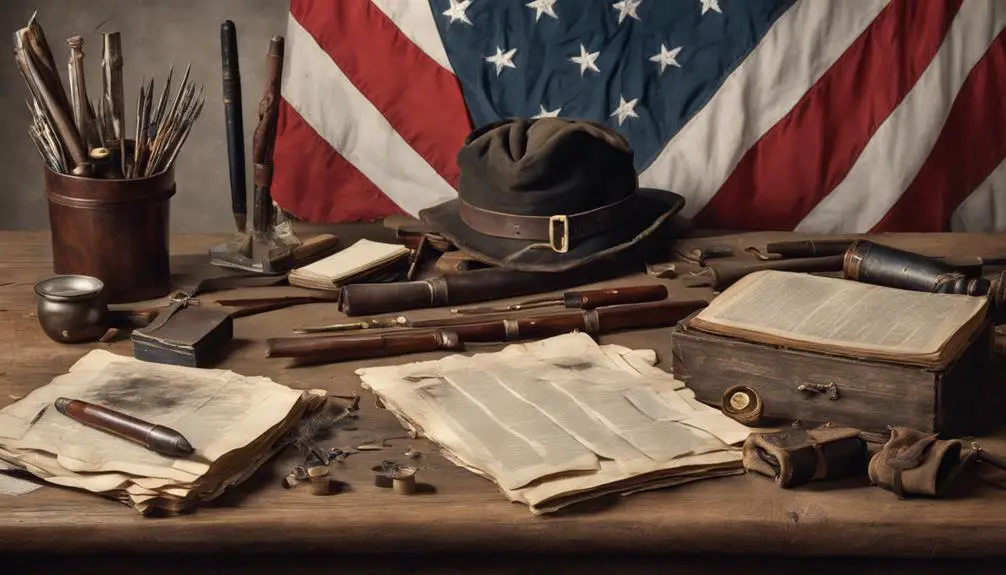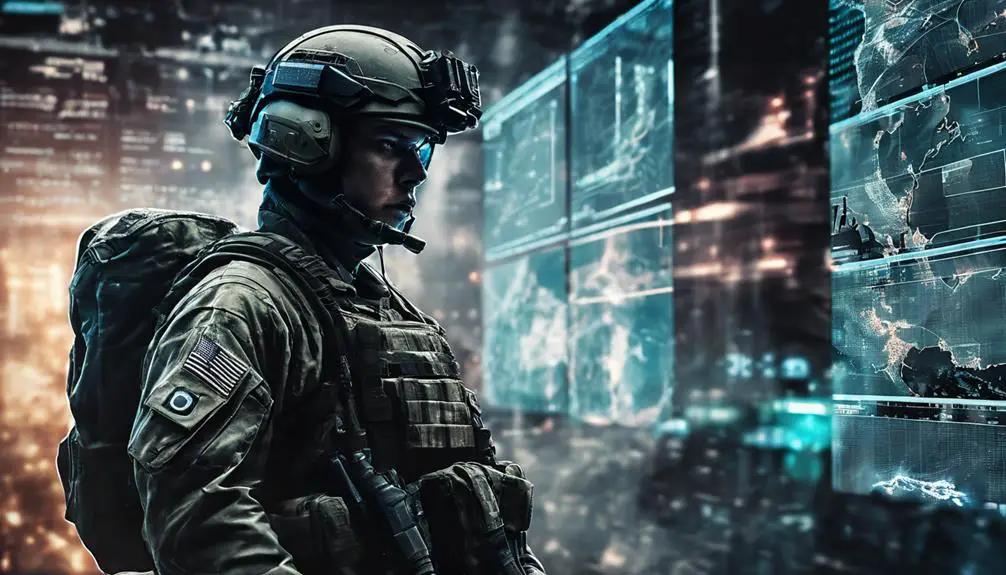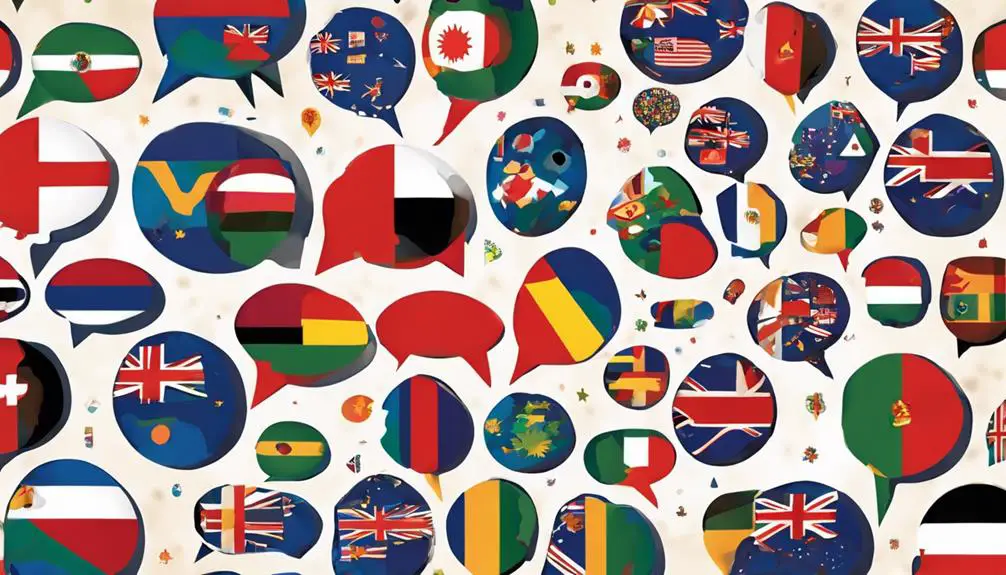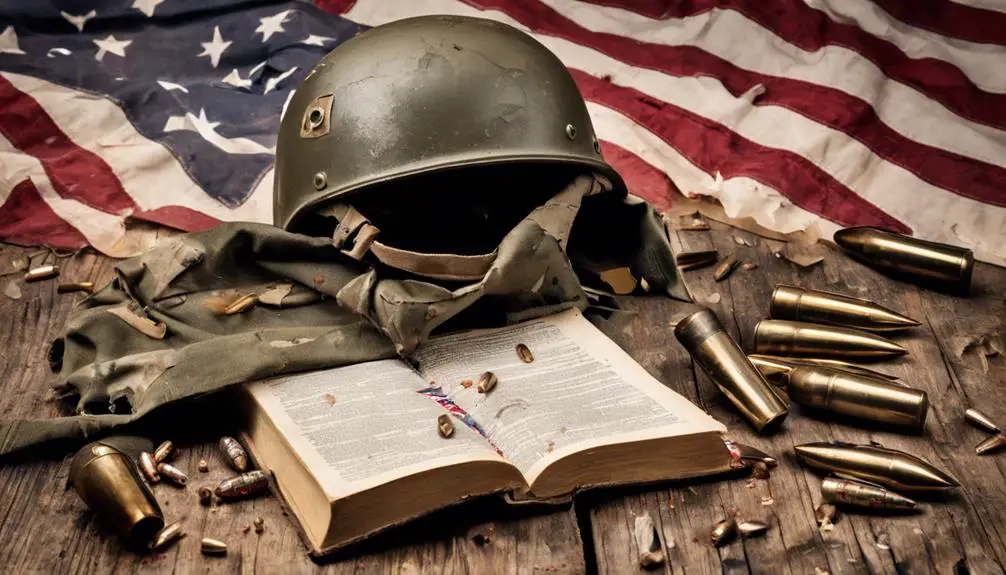As you explore American English military slang, you'll discover a rich tapestry of cultural influences, technological advancements, and soldier ingenuity. From the Revolutionary War to modern combat, each era has contributed to a unique language shaped by international borrowings, humor, and irony. You'll find formal and informal language blending to facilitate communication among ranks. Techno-centric terminology and colloquialisms reveal the evolving nature of warfare. Global influences from French, Spanish, German, and British languages have been incorporated, creating a distinct vocabulary. As you navigate this complex landscape, you'll uncover more about the fascinating history and nuances of American military slang.
Early American Military Lingo

During the American Revolutionary War, you encountered a unique blend of British, French, and Native American influences in the early American military lingo, which reflected the cultural melting pot of the time.
As you navigated the complexities of colonial communications, you noticed that Revolutionary Rhetoric played a significant role in shaping the language of the military. The Continental Army, comprising soldiers from diverse backgrounds, adopted a distinct vocabulary that was both practical and symbolic.
Military jargon, such as 'redcoat' for British soldiers, emerged as a way to identify and differentiate friend from foe. Additionally, the Revolutionary Rhetoric of liberty and freedom permeated military communications, reflecting the colonists' desire for independence.
The early American military lingo was characterized by a blend of formal and informal language, with officers using formal orders and soldiers relying on colloquialisms and slang. This unique blend of styles facilitated effective communication amidst the chaos of war.
As you explore the early American military lingo, you'll discover a fascinating reflection of the cultural, social, and political dynamics of the time.
Wars and Their Slang Legacy
As you explore the evolution of American military slang, you'll find that each war has contributed to a rich legacy of colloquialisms, acronyms, and phrases that have become an integral part of the military lexicon. From the trenches of World War I to the jungles of Vietnam, every conflict has left its mark on the language of the military.
War literature, such as Ernest Hemingway's 'A Farewell to Arms,' provides a unique window into the slang of the time, showcasing the creative and often irreverent ways soldiers used language to cope with the harsh realities of war.
The slang evolution is evident in the way words and phrases are borrowed, adapted, and transformed from one conflict to the next. For instance, 'doughboy,' originally used to describe American infantrymen in World War I, was later replaced by 'grunt' in Vietnam. This linguistic adaptation reflects the changing nature of warfare and the soldiers who fight it.
As you investigate further into the world of American military slang, you'll discover a rich tapestry of language that's both a reflection of the military's cultural heritage and a manifestation of the ingenuity of soldiers in the face of adversity.
Techno Talk in Modern Combat

In the era of modern combat, you're likely to encounter a new breed of techno-centric terminology, born from the marriage of advanced technology and the dynamic nature of contemporary warfare. As you navigate the complex landscape of modern combat, you'll need to be familiar with the language of techno-warfare.
Here are some key terms to get you started:
- Cyber warfare: the use of digital technologies to disrupt or destroy an enemy's command and control systems.
- Drone jargon: the specialized language used to operate and maintain unmanned aerial vehicles (UAVs), including terms like 'loiter' and 'pattern of life'.
- Network-centric warfare: a military strategy that relies on advanced communication networks to facilitate rapid information sharing and coordinated attacks.
- Situational awareness: the ability to maintain a real-time understanding of the battlefield, using advanced sensors and data analytics to stay one step ahead of the enemy.
As technology continues to evolve, so too will the language of modern combat. Staying current with the latest techno-talk is essential for success in today's fast-paced, high-tech battlefield.
Slang of the Ranks and Files
You'll encounter a distinct lexicon when interacting with enlisted personnel and non-commissioned officers, where colloquialisms and slang are deeply ingrained in their daily communication. Enlisted lingo, in particular, is characterized by a unique blend of humor, irony, and creativity. It's not uncommon to hear phrases like 'Hooah' (meaning 'yes' or 'agreed') or 'Oorah' (expressing enthusiasm or excitement). These colloquialisms serve as a way to build camaraderie and reinforce group identity within the ranks.
In contrast, officer jargon tends to be more formal and technical, often incorporating military-specific terminology and acronyms. You may hear phrases like 'SITREP' (situation report) or 'COMMS' (communications) in officer conversations. While officer jargon is more structured and protocol-driven, enlisted lingo is often more relaxed and adaptive.
Understanding these nuances can facilitate more effective communication and collaboration between the ranks. By recognizing the distinct characteristics of both officer jargon and enlisted lingo, you'll be better equipped to navigate the complex social dynamics within the military.
Global Influences on Military Speak

As you explore the world of American military slang, you'll discover that it's not solely a product of American culture. Military slang has borrowed heavily from international languages and cultural influences, with words and phrases like 'scorched earth' (from German) and 'boots on the ground' (from British military slang) becoming integral to American military lexicon.
The global influences on military speak are undeniable. Here are a few examples:
- French: Words like 'camouflage' and 'ranger' have been adopted from French, reflecting the historical military alliances between the two nations.
- Spanish: Phrases like 'guerrilla warfare' and 'commando' have Spanish roots, highlighting the impact of colonial and border conflicts.
- German: Terms like 'blitzkrieg' and 'flak' have been incorporated into American military slang, showcasing the cultural exchange during World War II.
- British: As mentioned earlier, 'boots on the ground' is a borrowed phrase, demonstrating the ongoing cultural fusion between American and British military forces.
This cultural fusion has enriched American military slang, making it a unique blend of borrowed phrases and homegrown expressions.
Frequently Asked Questions
What Is the Origin of the Term "Gi" in the US Military?
When you explore the origins of the term 'GI,' you'll discover it has nothing to do with American English Military Slang.
The term 'GI' originated from the Military branding of 'Galvanized Iron,' used to mark equipment and supplies during World War I.
Over time, soldiers adopted the term to refer to themselves, and it stuck.
Today, you know it as a colloquialism for a US military servicemember.
Is American Military Slang Used in Other English-Speaking Countries?
As you venture into the domain of military lingo, you'll find that American military slang hasn't entirely colonized other English-speaking countries. However, British influence has subtly seeped into the vocabularies of neighboring nations.
For instance, Australian adoption of terms like 'dig in' (to entrench) and 'squaddy' (a soldier) reflects a cultural exchange. While American slang hasn't dominated, it's clear that linguistic borders are permeable, and military jargon knows no bounds.
Are Military Slang Words Used in Civilian Life?
As you explore the domain of linguistic evolution, you'll find that military slang words often seep into civilian life through cultural assimilation. This phenomenon occurs when colloquialisms, born on the battlefield, are adopted by the general population.
You'll notice that words like 'boot camp' or 'operation' have become commonplace in everyday conversation. This crossover is a proof of the dynamic nature of language, where cultural exchange and linguistic evolution converge.
Can Military Slang Be Used in Formal Military Communications?
When communicating in formal military settings, you're expected to maintain a professional tone. In official channels, using slang is generally discouraged, as it can compromise clarity and undermine the formal tone required.
You should opt for standard, unambiguous language to guarantee precision and avoid misinterpretation. In formal military communications, it's imperative to prioritize clarity over colloquialisms, adhering to a formal tone that reflects the gravity of the message.
Are There Any Military Slang Words Specific to the Navy?
You're wondering if there are Navy-specific slang words. Yes, there are! Navy personnel use unique lingo, often referred to as Navy Lingo or Sea Terms.
For instance, 'head' refers to the restroom, while 'deck' denotes a ship's floor. You'll also hear 'port' and 'starboard' instead of 'left' and 'right'. These terms are essential for clear communication at sea, and you'll find them used throughout the Navy.
Familiarize yourself with these terms to better navigate Navy culture.
Conclusion
As you reflect on the evolution of American English military slang, ask yourself: Can a language forged in the fire of conflict truly be tamed?
From 'doughboy' to 'sitrep,' military slang hasn't only reflected the times but also shaped the way we communicate on the battlefield.
As technology advances and globalization increases, one thing remains certain – military slang will continue to adapt, serving as a tribute to the dynamic nature of language in the face of war.







